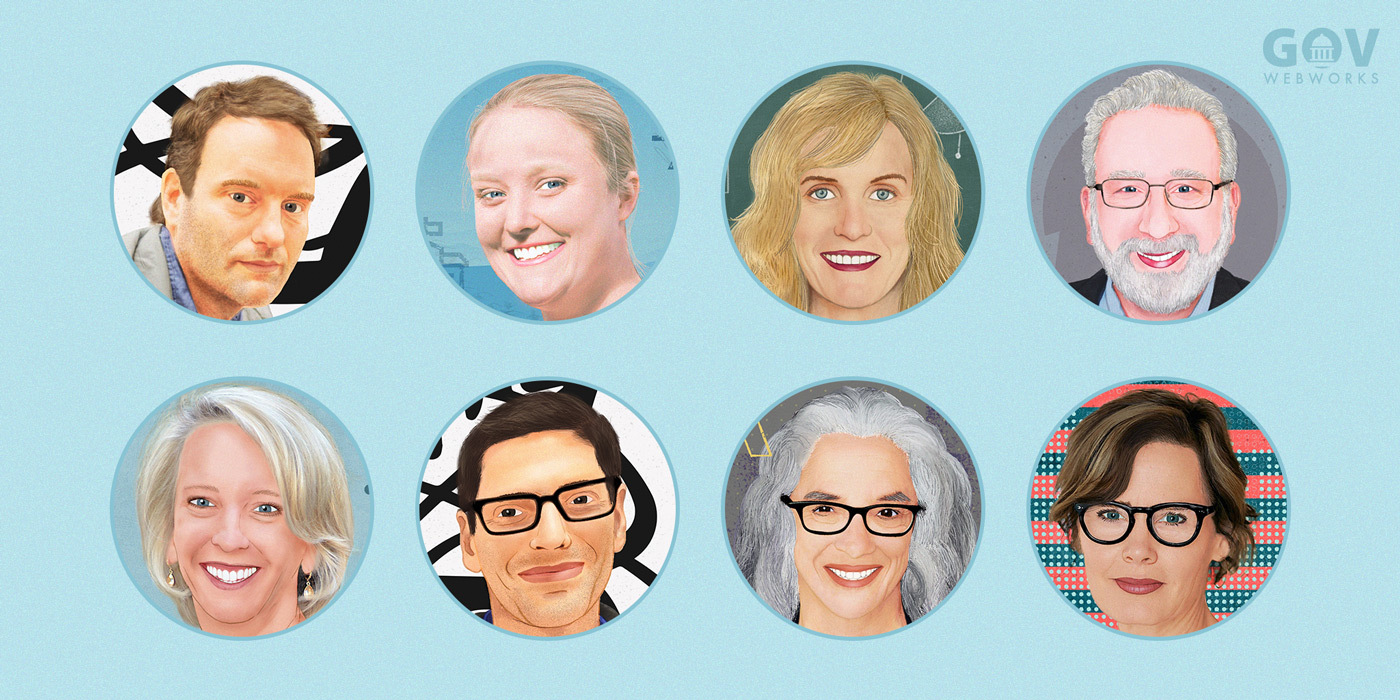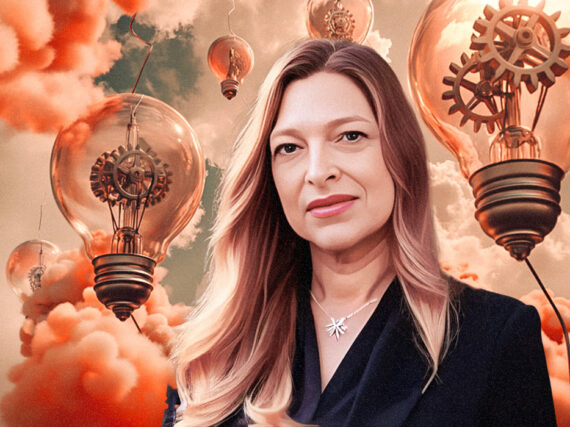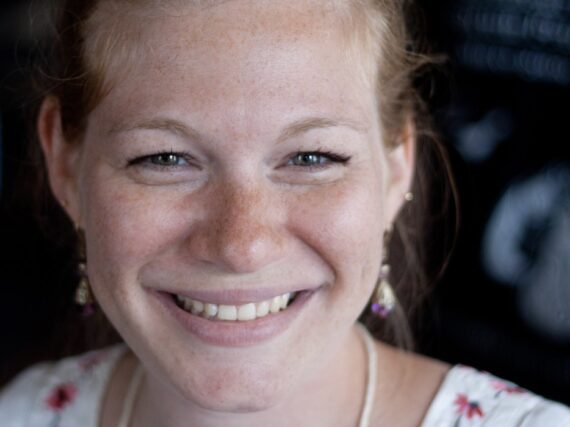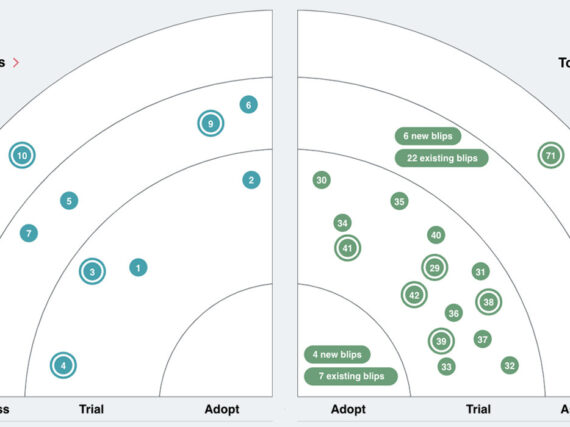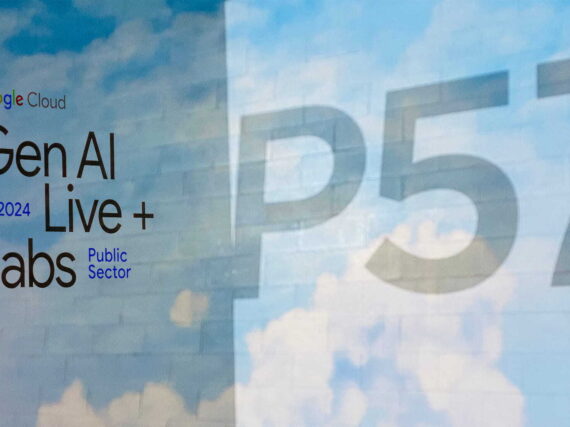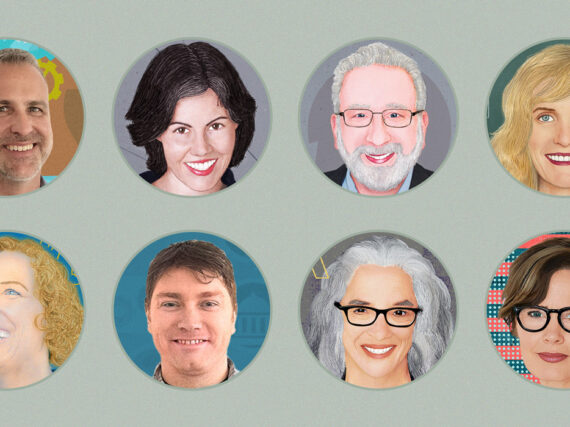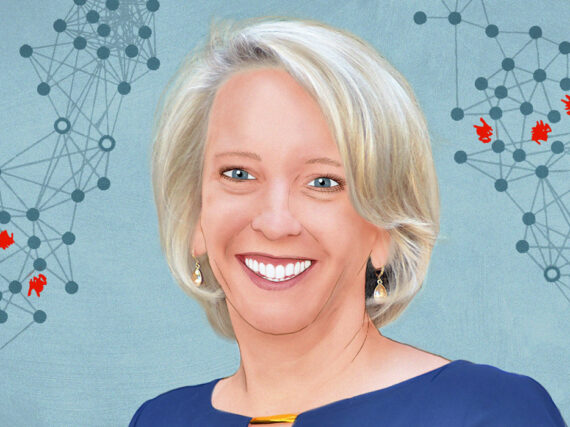Our public sector Insider Insights interviews bring together perspectives from authors, consultants, coaches, and other leading experts on topics relating to online digital innovation and agile practices for for gov tech.
This Industry Experts Series highlight features:
- Mary Uhl-Bien on adapting to change
- Iain Kerr and Jason Frasca on fostering innovation
- Jennifer Pahlka on changing the culture of gov tech
- Kristen Cox on how to be more effective
- Bob Galen on adopting agile coaching skills
- Jenn Page on tools for online education
- Lainey Feingold on building a culture of accessibility
The following excerpts from these top minds offer tips to help gov tech agencies succeed in today’s world.
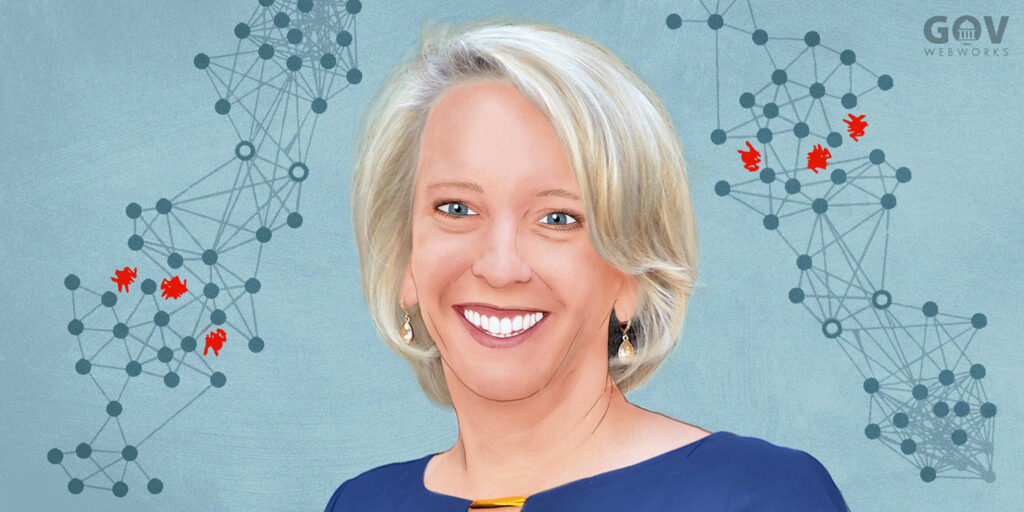
Mary Uhl-Bien: Neeley School of Business
Using Complexity Leadership Theory to adapt to change
We spoke with Mary about how leaders can use the science behind Complexity Leadership Theory to help their organizations not only connect and adapt to the complexity of today’s challenges, but thrive and prosper. How do we find ways to bridge across differences and work together to move things forward and adapt to change? According to Mary, learning to effectively engage in connecting is “the greatest leadership challenge of our time.”
How can government agencies harness the adaptive networked response?
“We need to create the conditions for adaptation to occur. We call these conditions adaptive space. It involves bringing people together with divergent views, bumping the different ideas and perspectives up against each other in conflicting.
You have to act while the adaptive space is open and the system is loosened up for change because once the complexity pressures are gone, things will quickly go into equilibrium around a new normal and return to a more stable steady state.
When adaptive space gets opened, you want to use that space to get in the change that you need to adapt the system. Many know this as the logic underlying the premise, “Never waste a good crisis.””
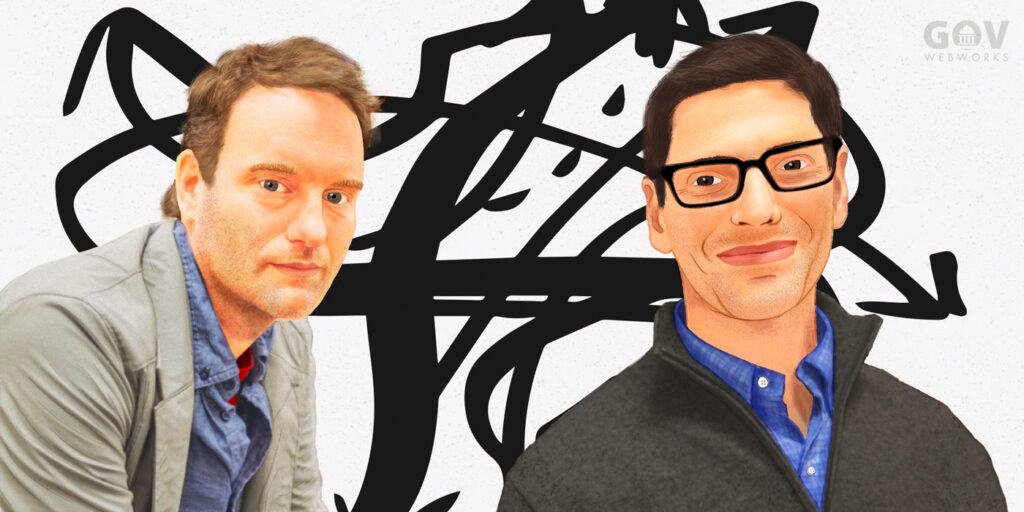
Iain Kerr & Jason Frasca: Emergent Futures Lab
Creating the new by experimenting with the old
“The beginning of the new is already there in everything,” is how consultants Iain Kerr and Jason Frasca of Emergent Futures Lab explain innovation. “It just needs to be actively and experimentally co-opted.” We asked them how they help individuals and agencies engage with their environments to find unintended possibilities in current realities. The secret, they say, is to release the myth of the lone genius and create an environment where teams can experiment and collaborate.
What can agencies do to be more innovative?
Jason: “For a team, provide a process that can be followed by anybody so they can participate in the overall ethos and ecosystem. It democratizes your community and allows everyone to be creative and innovative, rather than one genius who comes up with ideas for everyone to follow.”
Iain: “For a person, a super easy thing is to stop doing the things you most standardly do. Figure out the 10 most common things you do every day and block them. Unintended capacities will start to happen. Just be curious, lean into those. You’ve got to trust the process and not decide in advance that nothing interesting will come out of it.
Jason: “Keep your difference alive, is what we like to say. Own it.”
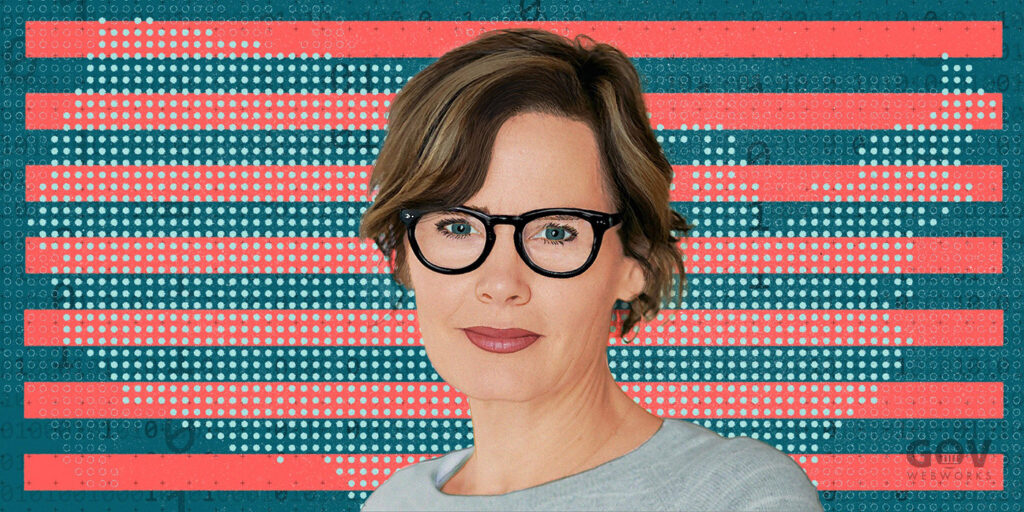
Jennifer Pahlka: Recoding America author
Changing the culture of gov tech
Too often, when government technology is hard to use, the teams implementing the technology are blamed for something they couldn’t control. In her book, Recoding America, which has been lauded on the Ezra Klein Show as “the book I wish every policymaker would read,” Jennifer Pahlka sets out to explain why we need a new approach. We asked her what those of us working in gov tech can do to make a difference.
>>View and save Jennifer’s gov tech tips
How can we get requirements more in alignment with user needs?
“The biggest change needed is bringing the concept and practice of product management to government. In the traditional framework of finding all the possible requirements and delivering on all of them, the more thorough you are, the better job you’ve done. This creates a lot of work for project managers, but it also results in what I call in my book “concrete boats,” software that’s so burdened with features and requirements that it sinks under its own weight. Product management can help.
When you’re able to bring in and define the roles of product owner and product manager and those people understand their jobs to be understanding user needs and figuring out how to first and foremost meet those in an iterative way, you’re not going to need to do every single requirement.”
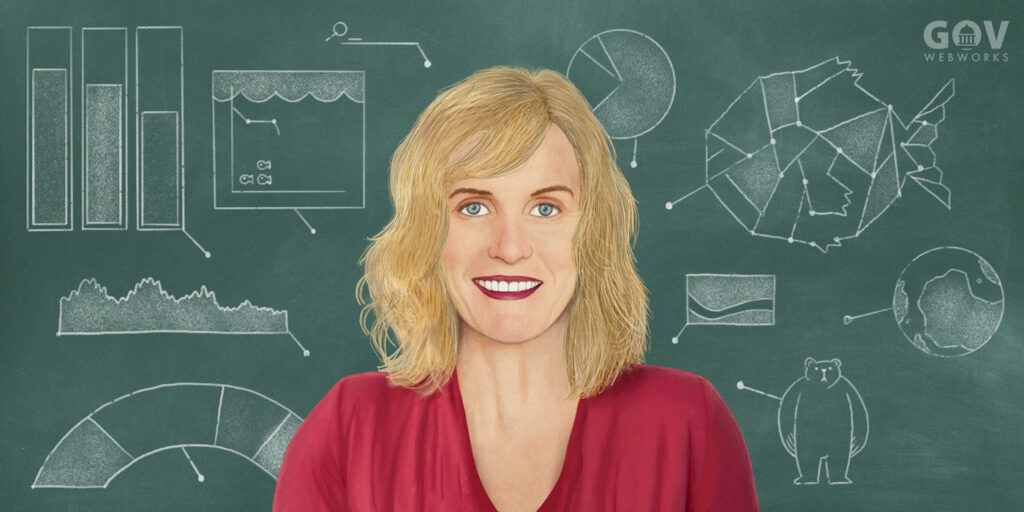
Kristen Cox: Theory of Constraints expert
Making government agencies more effective
When Kristen Cox found herself in an intense training program to learn the skills and mindset to become an effective and confident blind professional, her trainer said something she still uses as a daily mantra: “Kristen, you will get no new knowledge standing still. You’ve got to walk through your confusion, through your fear, into the unknown.” Now widely known as the world’s leading authority on how to apply the Theory of Constraints (TOC) for government and nonprofits, we asked Kristen how it can help agencies be more effective.
>>View and save Kristen’s TOC tips
How can Theory of Constraints help government?
“When government hears about something like this, they think we’re government, it won’t work, but I’m like, yeah, we’re all special, but not unique. The core underlying problems are very similar. The basic idea of TOC is, I can’t fix everything, no one has enough time, energy, or resources to do that. So, if I can’t fix everything, where do I focus?
That’s a hard question to answer because operations are invisible to us, they are hidden inside the black box of government. We measure lots of things like case load size, but we don’t understand what’s happening inside the black box very well.
Theory of Constraints gives us clarity: who is the customer? And focus: what’s the problem to solve for that customer? Then I can put all my resources on that problem. That’s the essence of TOC – clarity and focus.”
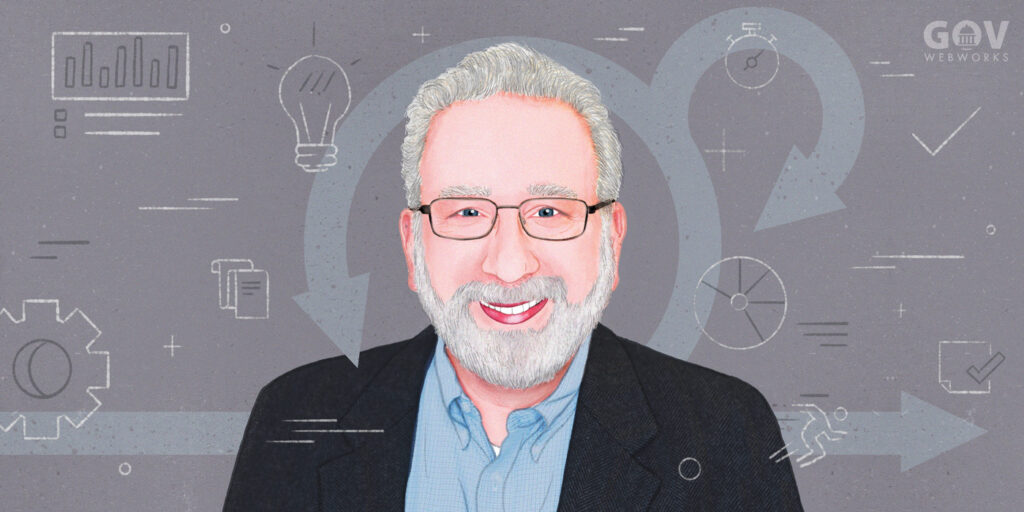
Bob Galen: Agile coach and author
Leading by example
It was after publishing his most recent book, Extraordinarily Badass Agile Coaching, that author Bob Galen realized agile coaching skills aren’t just for agile coaches, rather, everyone can benefit from them. “The communication, negotiation, and listening skills used by an agile coach can complement anyone and make them better at what they do,” he says. We asked him for some tips on how to lead by example and become an everyday agile coach.
>>View and save Bob’s leadership tips
How can everyone be a coach?
“Coaching and leadership are inside-out jobs. When we talk about the postures of coaching, in the middle of the Agile Coaching Growth Wheel is self-mastery, which is about owning your awareness, growth, and presence. It’s the hub of everything. I’ll argue that learning self-mastery will make anyone a better person, leader, or coach advisor.
The professional coaching stance reminds us that you are not responsible for changing another person, that person is responsible for changing him or her self. All you can control is your own mindset and self-mastery. Being intentional about how we show up is our main job. The impact you have is in the questions you ask to guide the coaching conversation and in meeting the person with respect and empathy.”
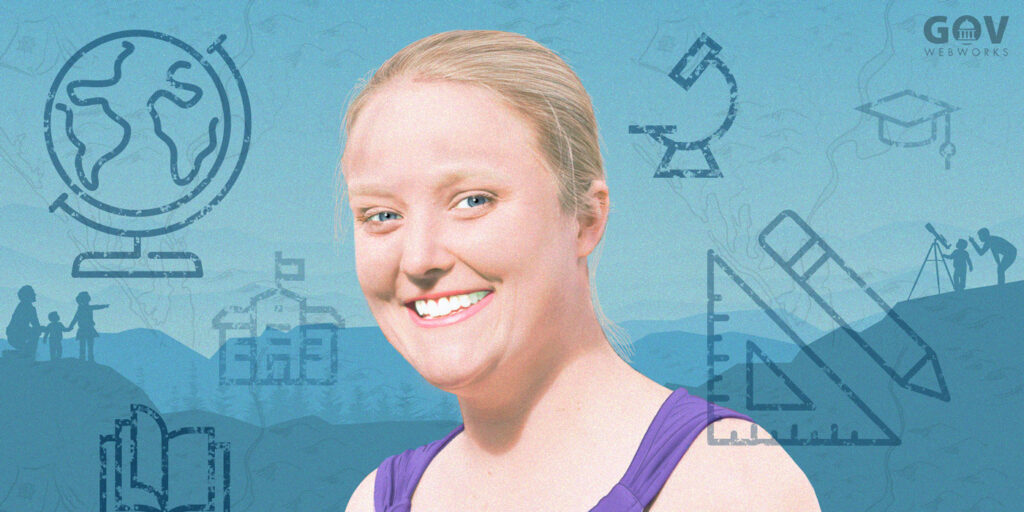
Jenn Page: Learn With MOOSE project manager
Addressing education’s biggest challenges
Jenn Page found a new mission during the pandemic when she was recruited by the Office of Innovation at the Maine Department of Education to develop what would become Learn With MOOSE, Maine Online Open-Source Education, a free education platform to support pre-K to grade 12 educators with remote learning tools. We spoke with Jenn about why MOOSE continues to be an important tool for students back in school.
What do you see as the biggest challenge facing education today?
“The challenge we’re facing–and the opportunity–is that systems of education, government, and community are largely set up from a time with a much more industrial perspective. We used to get a student trained for a job or a career pathway and that’s what they’re going to be for the rest of their life. It was a much more predictable end game for folks.
Now, what we’re seeing is the need for interdisciplinary studies to allow students to flex between different jobs and career pathways because there’s a high likelihood that the job they go into when they graduate is not going be where they’re going to end up. This shifts the concept of how we do education and why education exists in that way it does.
The old systems aren’t built for the way students need to be working and learning today and there’s a lot of both inertia and momentum in terms of turning that challenge into an opportunity.”
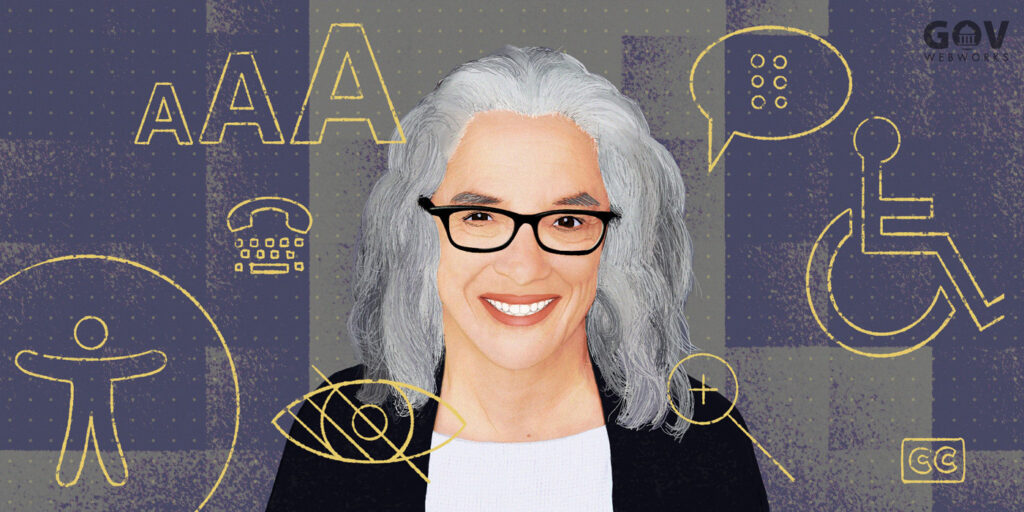
Lainey Feingold: Accessibility rights lawyer and author
Building a culture of accessibility
After accessibility rights lawyer Lainey Feingold negotiated with Bank of America to adopt the new Web Content Accessibility Guidelines (WCAG) in 2000, she wrote Structured Negotiation, A Winning Alternative to Lawsuits, now in its second edition, on how to adopt her unique approach to negotiated settlement agreements. We spoke with her about her approach and what agencies can do to embrace accessibility on their teams and online tools.
>>View and save Lainey’s accessibility tips
How can people at public sector agencies embrace accessibility?
“I have a quote on my printer that says, “The future depends on what you do today.” The key thing is to start. Don’t think of this as, “Oh no, we screwed up,” but as an opportunity to make things better. You haven’t done it all yet. It’s okay.
Start hiring people with disabilities front and center until you have good representation in your organization. We need to change the culture to understand that people with disabilities are in every aspect of the work, not just as consumers, but as creators, employees, and decision makers.
You cannot have diversity, equity, inclusion, and belonging without including accessibility because accessibility makes it possible for everyone to participate in the digital world at work, in public, and in the marketplace.”
Learn more
- Public Sector Insider Insights Tips: Download tips from top minds on how to succeed in gov tech
- Industry Experts Series: Volume I with Tara McGuinness and Hana Schank on public interest technology, Michael Sahota on evolutionary agile leadership, Katie Swindler on user-centered design, and Padma Gillen on content strategy.
- Industry Experts Series: Volume II with Cyd Harrell on civic tech, Jon Bloom on conversation design, Abbey Covert on information architecture, and Jamie Brennan on modernizing online benefits tools.
- Contact us to learn more about how digital tools help government adapt
